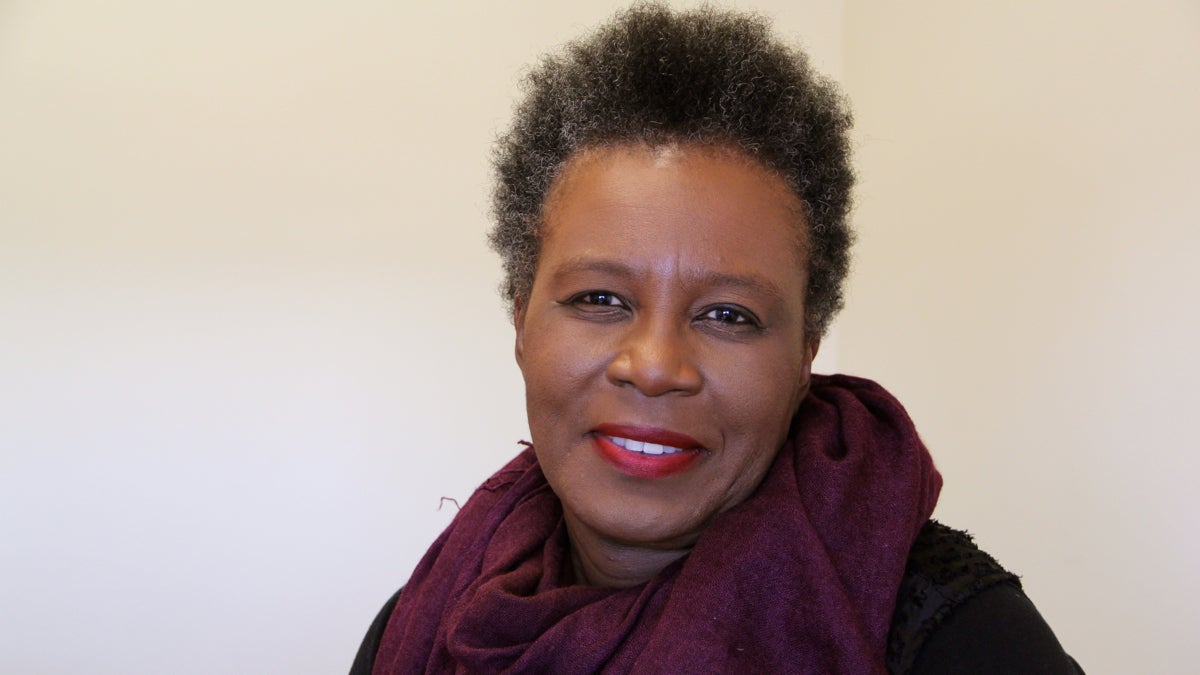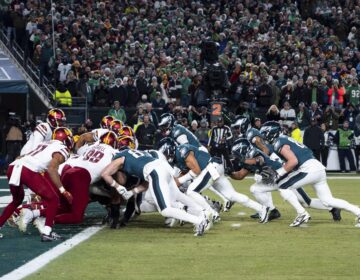‘Citizen’ a poetic take on American race relations

Claudia Rankine is the author of Citizen: An American Lyric." (Emma Lee/WHYY)
Claudia Rankine is angry, but not the kind of angry that gets people marching in the streets. During an interview in the lobby of the Doubletree Hotel in Center City Philadelphia, where she is staying for a few days at the invitation of Temple University, the 52- year old’s soft voice barely rose above the din.
Her book, “Citizen: An American Lyric” gets at a smaller angers that arise constantly from the common racial slight: when somebody makes an off-color remark, or initially treats her with disdain and then immediately apologizes. It’s the kind of anger that is more exhausting than enraging.
“Within yourself you have to negotiate that every single time. Every single time,” said Rankine. “They feel small only in that they are not killing you. It is not a gun to your head. But that kind of belittlement, degradation — they are not small at all.”
Rankine has just won the National Book Critics Circle award. She is in Philadelphia this week to work with poets in Temple University’s Creative Writing masters program, and read from “Citizen” at Temple’s Center City campus on Thursday night.
She is a poet, and this book-length essay on the state of race relations in America has a poetic sensibility, with impressionistic anecdotes and an elliptical structure.
“One Sunday afternoon, drinking an Arnold Palmer, watching the 2009 Women’s US Opens final,” Rankine was “brought to full attention by the suddenly explosive behavior of Serena Williams.”
Williams appears at length in this book, having suffered years of taunts on the court before blowing up at a line judge during the 2009 U.S. Open. Since 2001 she had boycotted the Indian Wells Masters, a tennis tournament in California, since she had racial epithets hurled at her there. After 14 years she has broken her boycott and, as of this writing, is advancing toward the finals at Indian Wells.
Williams physically embodies Rankine’s thesis: compelled to stay apace with the speed of life, people are willing to swallow common indignities every day. As a champion athlete for many years, Williams’ body and ongoing relationship with a largely white sport’s culture has been literally broadcast to the world.
Yes, and the body has memory. The physical carriage hauls more than its weight. The body is the threshold across which each objectionable call passes into consciousness — all the unintimidated, unblinking, and unflappable resilience does not erase the moments lived through, even as we are eternally stupid or everlastingly optimistic, so ready to be inside, among, a part of the games.
Rankine also references Jayson Musson, an artist formerly from Philadelphia who invented a black caricature named Hennessy Youngman. He appears in a series of online videos to offer advice on how to appear to be an angry black artist.
“I suggest you watch footage of pit bulls fighting, or the Rodney King beating over and over again, or look at pictures of Emmett Till in his coffin,” Musson says, as the Youngman character in the video “How To Be A Successful Black Artist” “I’m getting angry just telling you this sh*t.”
The “Youngman” persona — dressed in a cliché of hip hop gear — uses biting satire to suggest that, in order to be successful, a black artist should cultivate a stereotypical “black” appearance to appeal to white patrons.
Similarly, but with less sarcasm, Rankine is speaking to middle- and upper-class audiences who believe they transcend racism.
“He is from the art world. [Musson] is critiquing people who embrace him, and don’t understand why,” said Rankine. “Black artists themselves are exploiting their art. Everybody is in this racial imaginary, and positioning themselves around it. I used his video ‘How To Be A Successful White Artist,’ in which he says: be white; and I used his video ‘How To Be A Successful Black Artist,’ in which he says: be white.”
“Citizen” is structured as a collection of smaller pieces, or stanzas — sometimes taking up just half the page. Rankine selected pictures, mostly images of works by black artists, that illustrate the content, sometimes literally, sometimes intuitively.
“Even in the essay, I’m writing from poetry,” said Rankine. “There’s a lot of repetition, a lot of alliterative moves, a lot of elliptical jumping. If it looks like an essay or feels like a prose poem, the methods creating those things are still from the world of poetry.”
WHYY is your source for fact-based, in-depth journalism and information. As a nonprofit organization, we rely on financial support from readers like you. Please give today.





